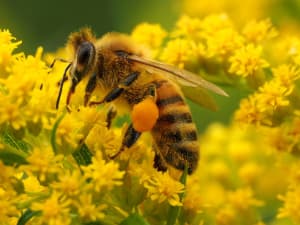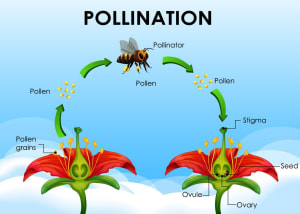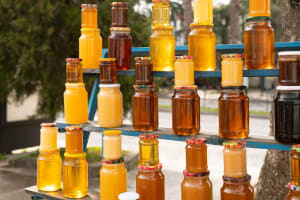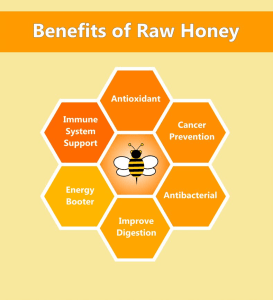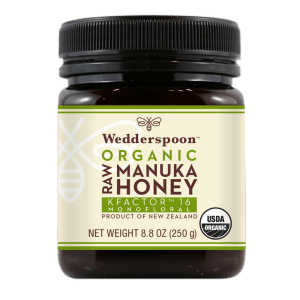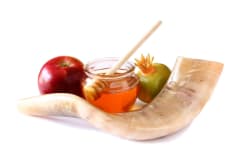As Rosh Hashanah approaches, honey takes center stage. Incredibly, kosher honey comes from the bee, a non-kosher animal. The Talmud’s explanation for why it is permissible to eat reveals a deeper message relevant to the Jewish New Year. The journey into the world of honey is vast and involved, but important, as it brings to the forefront the inner workings of the bees, a species that on its way to producing honey pollinates the world’s agricultural economy. Consumers have turned to honey as a functional ingredient with taste and health benefits, while the beverage manufacturers describe it as the perfect sweetener. In this article, we will be showcasing Wedderspoon, an OU kosher-certified company based in New Zealand, that specializes in Manuka honey coming from the Manuka bush that is dark and creamy with strong antioxidant qualities.
The Honey Making Process
Honey is produced through a strict division of labor process. Bees exist as a superorganism, with an average of 50,000 bees that are divided into classes, including the Queen Bee who ensures the continuation of the hive by laying about 2,000 eggs a day, drones, that are male bees stationed in the hive to be available to mate, house bees that accept the honey brought to the hive and female forager bees that leave the hive and collect the nectar from flowers that is transformed into honey.
The female forager bee has the crucial responsibility to collect the nectar from the flower which serves as the base for honey. Once the forager is on top of the selected flower, it extracts nectar, which is liquid sugar, using its proboscis (tongue). The nectar is then stored in the bee’s honey stomach where enzymes begin to break it down through inversion. In this process, the sucrose of the nectar is broken down into glucose and fructose, simpler sugars. The forager bee then returns to the hive and passes the broken-down nectar to the house bees. The house bees further break it down with enzymes. At that point, the honey has about a 20 percent water count. In the final stage, the house bees place the honey in honeycombs and fan it to dry it further and then cover it with beeswax. This honey is stored away as food for new offspring and to survive the winter.
Bees as Pollinators and Extinction Concerns
Besides producing honey, bees are major pollinators. Pollen from one flower sticks to the bee’s hair and is transferred to the next, enabling flowers and plants to reproduce. According to Greenpeace, “90 percent” of the world’s nutrition comes through bee pollination. Everyday food items such as apples, blueberries cherries, broccoli and others could be at risk without pollination. Farmers.gov notes that in the United States, bees pollinate “80 percent” of flowering plants. A United Nations report writes that bee pollination is responsible for “35 percent” of global agriculture and Forbes estimates that bee pollination accounts for “235 to 577 billion” in the food production area. In this context, one can understand what Einstein said: “If the bee disappeared off the surface of the globe, then man would have only four years of life left. No more bees, no more pollination, no more plants, no more animals, no more man.” Currently, there are real concerns in the area of bee extinction. The Independent reported that since the 1990s over 25 percent of all known bee species have disappeared. In the U.S., Inverse references a 2021 study that showed a steep decline in the bee population. Just two years ago, Bee Informed reported on a study that “45.5 percent” of bee colonies were lost. Geoffrey Williams, co-author of the survey that discovered these numbers said, “Colony losses remain elevated, and this year’s annual and summer loss rates are among the highest recorded.” Nathalie Steinhauer, also a member of the research team that found these numbers, noted, “Though we see fluctuations from year to year, the worrisome part is we see no progression towards a reduction of losses.”
There is great concern that certain industrial pesticides are accelerating the extinction process. Neonicotinoids are types of pesticides that attack the central nervous system of the bee leading to paralysis and death. The European Food Safety Authority (EFSA) has been active in trying to protect bees from harmful pesticides, but it’s an area that needs more regulation.
The Honey Market
Honey is in great demand. Consumers are searching for functional ingredients, namely those with taste and health. Also, the beverage industry is beginning to use honey as a sweetener because it’s more cost-effective, as less honey than table sugar is needed to sweeten drinks. In addition, honey has a myriad of flavors, as the bees can collect nectar from a large quantity of different flowers. Margaret Lombard, CEO of the National Honey Board, said…“honey consumption has been steadily increasing over the past three years as consumers come to appreciate the less-processed nature of the golden liquid sweetener.” Retail sales are strong. FoodNavigator USA notes that sales hit “796 million” in 2021.
Health Properties of Honey
Because of the natural sugars, vitamins and minerals found in honey, it’s a good energy source. It has powerful antioxidants which have been found to boost the immune system. A study found that it has anti-cancer effects as it contains tricetin, a polyphenol that is a strong chemopreventive agent. Honey can help coughs as well. Oxford University Researchers found that honey can help treat upper respiratory tract infections. Honey has also been found to help the digestion system. A study found that honey has prebiotic qualities that help nourish bacteria in the gut which promotes good digestion. Because it has so many antibacterial qualities, honey can be used for wounds as well. Peter Charles Molan, a New Zealand biochemist, found in multiple studies that honey has wound-healing effects.
OU Kosher-Certified Wedderspoon
Nestled in the hilly countryside of New Zealand, OU kosher-certified Wedderspoon harvests Manuka honey from the Manuka bush that is native to that area. Manuka honey is darker, indicative of higher antioxidant qualities, with a sweet and creamy taste. This honey has strong antibacterial and anti-inflammatory characteristics. It’s very versatile and can be used in many ways. As part of the diet, it can be used as a dip, mixed into beverages or included in recipes. Wedderspoon hosts a blog that informs consumers on the many ways their products can be used.
Their beekeepers adhere to strict ecological standards knowing that bees are vital to agricultural sustainability. New Zealand government’s Ministry for Primary Industries (MPI) has established a scientific definition for Manuka honey to authenticate that it’s genuine. Wedderspoon is in full compliance with this standard.
Wedderspoon offers other products in different forms. For instance, they have Manuka honey drops that are mixed with eucalyptus oil. Eucalyptus oil is drawn from the eucalyptus tree that’s native to Australia. It has a fine taste with added healing properties. Eucalyptus oil is known to help with headaches, ease joint pain, help with respiratory ailments and offer allergy relief.
The Rosh Hashanah Message from Bees and Honey
The Talmud explains that even though honey comes from the bee, a non-kosher animal, it is kosher because the honey is broken down in the bee’s honey stomach, a mere storage area, and not in the bee’s digestive system, so it’s not a real secretion of the bee.
It’s quite perplexing, however. Honey is a symbol of the new year, that represents renewal and repentance. Why would we use a substance that has “any” connection to a non-kosher animal? Even more perplexing is that two seemingly contradictory metaphors become intertwined: impurity and sweetness.
Man was what G-d dreamed for when He created the world. But man revolted against G-d and brought impurity to the world and dispersed shattering sparks to all of the earth. But G-d still yearned for man and gave him the ability to return. The type of return is miraculous in nature because if done properly, it changes any previous impurity into merits. This is because if man changes his nature to mimic the Divine, he gains retroactive reward and sweetness. The bee gives a visual example of this and serves as the symbol to the proposition that should man enter a “non-kosher” state, he is given the right of return, but with miraculous powers to make the past, present and future sweet.
However, like the superorganism of the bees, it’s a prerequisite that man carry out his individual mission while identifying with the whole. A hive is only as successful as the bees that carry out their specific duties and work together. If one bee ignores his mission, then the whole hive can be in peril. And if the whole hive doesn’t protect its own, the hive will collapse. Therefore, one’s right of return must be accompanied by identification with the nation. That brings symbiotic wholeness.
Rabbi Avraham Laber, leader of the Chabad-Lubavitch of Southern Rensselaer County in New York, who is a beekeeper as well, derives another powerful message from bees. Bees, as mentioned, are pollinators that are responsible for benefiting agriculture on a global scale. The bee, however, is unaware that the pollen attaches to its hairs and is then dropped off at the next flower it visits which enables that flower to reproduce. Flower reproduction is the source of global food sustenance. He argues, how much more so, for man who knows his actions benefit others and the world. With such knowledge, it’s incumbent upon man to give his greatest effort to better others and the world in general.
Finally, Rabbi Hillel Faerman, Rosh HaYeshiva, Tsama Nafshi, notes the Midrash Rabbah (1,6) that connects the book of Devarim and bees, as bees are called devorim. Moshe, in his last speech to the Israelites, engenders love and sweetness by preparing them for their final destination. “Words” (devarim) represent a language of love and caring, as opposed to directives that are harsh and connote that something must be done in a certain way. Devorim, as well, stand for complete sweetness as they sustain the planet and work in pure harmony with each other.
One might wonder how an “impure-based” substance like honey can co-exist with the fact that Israel, with its great holiness, is referred to as “a land flowing with milk and honey,” as Israel is on the purest of levels. The answer is that the honey of Israel is referring to date honey and not bee honey. Dates represent the righteous, but bee honey represents the common man that has the majestic ability to bring sweetness to retroactive deeds.
Conclusion
Rosh Hashanah is the time of the year when honey is used in abundance. The fact that honey originates from the non-kosher bee symbolizes man’s power to initiate a sweet return, even from a state of total impurity, whereby he can change his past. Honey has gained traction as a year-round product as well. Consumers are looking towards it as a functional item that offers a unique taste with health benefits and the beverage industry is using it as a sweetener to add flavor. Consider dipping the traditional apple in OU kosher-certified Wedderspoon rich and creamy dark Manuka honey products this year.
Recipe for Chocolate-Dipped Honey Cookies by Eileen Goltz courtesy of OU Kosher



